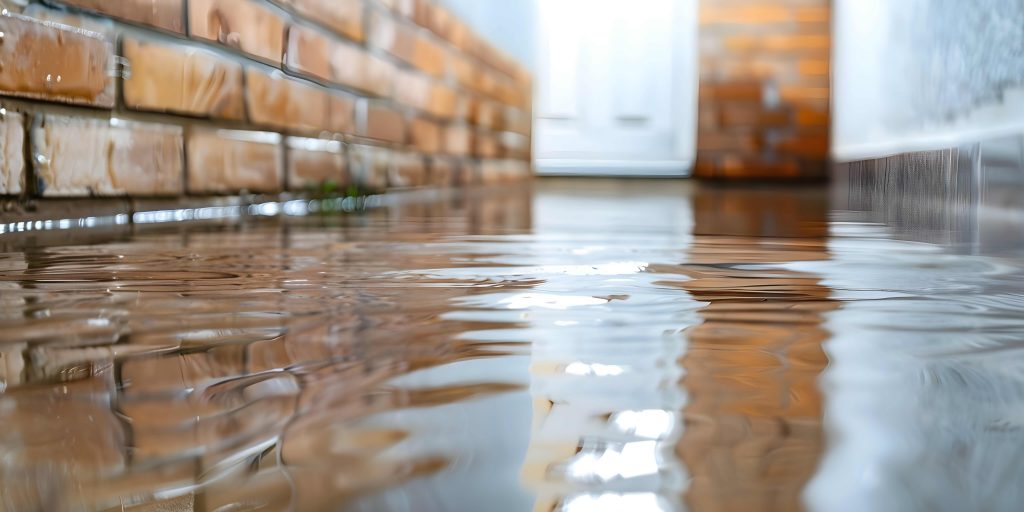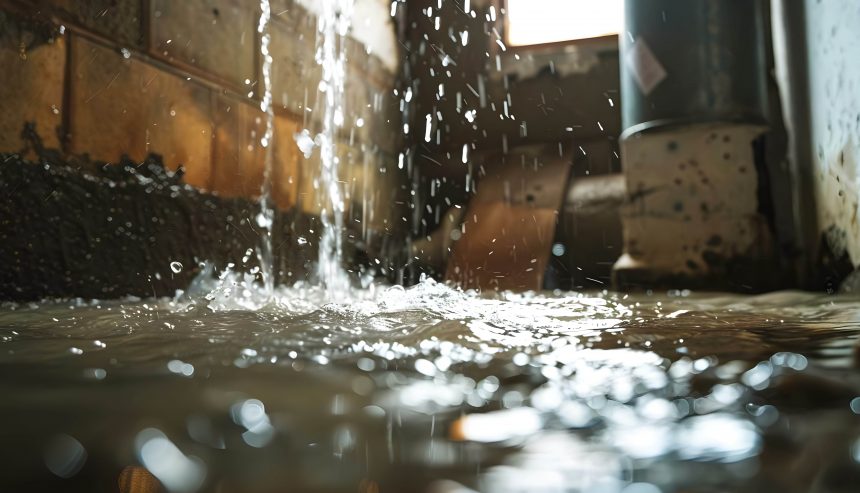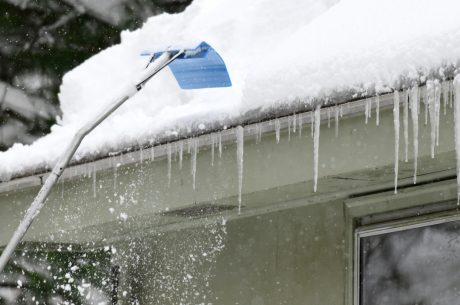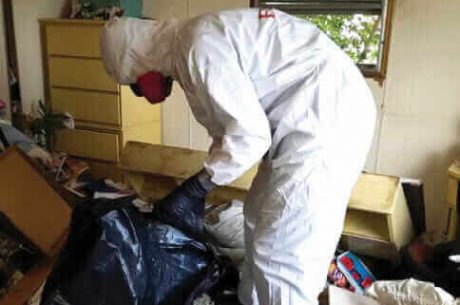Runoff water is a disaster waiting to happen. Water damage from runoff flooding can be a significant concern for property owners in Salt Lake City. The unique topography, weather patterns, and urban development in this area contribute to the risk of runoff flooding. As a property owner, taking proactive measures can save you from costly repairs and ensure the safety and integrity of your property. This comprehensive guide will explore strategies to prevent water damage due to runoff flooding in Salt Lake City. For quick runoff water and flooding damage restoration call 801-989-5554 or Click here.
Understanding Runoff Water & Flooding
Runoff water and flooding occurs when rain or snowmelt flows over the land surface and is not absorbed into the ground. This water can accumulate rapidly, especially in areas with impervious surfaces like roads, parking lots, and buildings, leading to flooding. Several factors contribute to runoff water and flooding in Salt Lake City:
- Topography: The Wasatch Mountain Range influences the flow of water during heavy rainfall or snowmelt.
- Weather Patterns: Intense rainstorms and rapid snowmelt are common in the region, leading to significant runoff.
- Urban Development: Increased impervious surfaces reduce the ground’s ability to absorb water, exacerbating runoff.
Assessing Flood Risk due to Runoff Water
Before implementing preventive measures, it’s crucial to assess your property’s flood risk. Here are steps to evaluate the risk:
- Flood Zone Maps: Consult FEMA flood zone maps to determine if your property is in a high-risk area.
- Local Authorities: Contact local authorities or the Salt Lake City Public Utilities Department for information on flood-prone areas.
- Property Inspection: Hire a professional to inspect your property and identify vulnerabilities to runoff flooding.

Preventive Measures to Avoid Water Damage
- Landscaping and Grading: Proper landscaping and grading can significantly reduce the risk of water damage due to runoff water Here’s how:
a. Grading: Ensure the ground slopes away from your property. This prevents water from pooling around the foundation. A slope of 1 inch per foot for at least 6 feet is recommended.
b. Swales and Berms: Create swales (shallow ditches) and berms (raised areas) to direct water away from your property. Swales can be lined with grass or rocks to slow down water flow and enhance absorption.
c. Rain Gardens: Plant rain gardens with native plants that can tolerate wet conditions. Rain gardens help absorb runoff and reduce the volume of water that reaches storm drains.
2. Gutters and Downspouts: Properly maintained gutters and downspouts are crucial for directing water away from your property:
a. Regular Maintenance: Clean gutters and downspouts regularly to prevent blockages. Ensure they are securely attached and free from leaks.
b. Downspout Extensions: Install downspout extensions to direct water at least 10 feet away from the foundation. This prevents water from accumulating around the property.
c. Gutter Guards: Consider installing gutter guards to prevent debris from clogging the gutters.
3. Permeable Surfaces: Reducing impervious surfaces and incorporating permeable materials can help manage runoff:
a. Permeable Pavers: Use permeable pavers for driveways and walkways. These allow water to seep into the ground, reducing runoff.
b. Gravel and Mulch: Replace concrete or asphalt surfaces with gravel or mulch to enhance water absorption.
c. Green Roofs: If feasible, install green roofs. These roofs are covered with vegetation, which absorbs rainwater and reduces runoff.
4. Foundation Protection: Protecting the foundation is critical to prevent water damage:
a. Seal Cracks: Inspect the foundation for cracks and seal them with waterproof sealant to prevent water infiltration.
b. Waterproofing Membrane: Apply a waterproofing membrane to the exterior of the foundation. This creates a barrier against water.
c. Sump Pump: Install a sump pump in the basement to remove water that accumulates. Ensure the sump pump is in good working condition and consider a battery backup system.
5. Drainage Systems: Effective drainage systems are essential for managing runoff:
a. French Drains: Install French drains around the property to channel water away. These drains consist of perforated pipes buried in a trench filled with gravel.
b. Surface Drains: Use surface drains to collect and redirect water. These can be installed in areas where water tends to pool.
c. Dry Wells: Construct dry wells to collect and disperse water underground. Dry wells allow water to slowly infiltrate into the ground.
6. Flood Barriers and Shields: Temporary or permanent flood barriers can protect your property during heavy rainfall:
a. Sandbags: Use sandbags to create a barrier around the property. While effective, sandbags are a temporary solution and require timely placement.
b. Flood Panels: Install flood panels or shields at vulnerable entry points such as doors and windows. These panels can be quickly deployed when needed.
c. Flood Vents: Consider installing flood vents in the foundation. These vents allow water to flow through, reducing pressure on the foundation walls and preventing structural damage.
Emergency Preparedness
Despite taking preventive measures, it’s essential to be prepared for potential flooding:
a. Emergency Kit: Assemble an emergency kit with essential supplies, including water, food, medications, flashlight, batteries, and important documents.
b. Evacuation Plan: Develop an evacuation plan for your family and practice it regularly. Know the safest routes to higher ground.
c. Insurance: Review your insurance policy and consider purchasing flood insurance. Standard homeowner’s insurance typically does not cover flood damage.
d. Communication Plan: Establish a communication plan with family members. Ensure everyone knows how to contact each other during an emergency.
Community Involvement and Advocacy
Individual efforts are crucial, but community involvement can amplify the impact of flood prevention:
a. Neighborhood Initiatives: Collaborate with neighbors to implement flood prevention measures in your community. This can include creating communal rain gardens or organizing clean-up drives to keep storm drains clear.
b. Advocacy: Advocate for city-wide initiatives to improve drainage infrastructure and promote sustainable urban planning. Engage with local government officials and participate in community meetings.
c. Education: Educate others about the importance of flood prevention and the steps they can take to protect their properties. Share resources and information within your community.
PuroClean of Layton: Your Partner in Runoff Water & Flood Prevention and Recovery
While preventative measures are crucial, having a professional partner like PuroClean of Layton can significantly enhance your efforts to avoid water damage and recover swiftly if flooding occurs.
About PuroClean of Layton
PuroClean of Layton is a leading property damage restoration company specializing in water damage restoration. With years of experience and a team of highly trained professionals, PuroClean provides comprehensive services to help property owners prevent and recover from water damage due to runoff flooding.
Services Offered by PuroClean of Layton
Water Damage Assessment and Restoration
- PuroClean conducts thorough assessments to identify the extent of water damage and provides detailed reports to property owners.
- Their restoration services include water extraction, drying, dehumidification, and structural repairs to restore your property to its pre-damage condition.
Mold Remediation
- Mold growth is a common consequence of water damage. PuroClean’s experts use advanced techniques to remove mold and prevent its recurrence, ensuring a healthy indoor environment.
Sewage Cleanup
- Runoff water & flooding can cause sewage backups, posing severe health risks. PuroClean offers prompt and efficient sewage cleanup services to mitigate these risks and restore sanitary conditions.
Emergency Response
- PuroClean of Layton provides 24/7 emergency response services, ensuring that help is available whenever you need it. Their rapid response can significantly reduce the extent of damage caused by runoff water and speed up the recovery process.
Insurance Assistance
- Navigating insurance claims can be challenging. PuroClean assists property owners with the claims process, providing necessary documentation and working directly with insurance companies to ensure a smooth and efficient process.
Case Study: Successful Flood Prevention in Salt Lake City
Let’s examine a hypothetical case study of a successful flood prevention effort by a property owner in Salt Lake City:
The Situation: Jane, a homeowner in Salt Lake City, noticed water pooling around her foundation after heavy rains. Concerned about potential water damage, she decided to take action.
Assessment: Jane hired a professional to assess her property’s flood risk. The inspection revealed poor grading, blocked gutters, and a lack of proper drainage.
Implementation: Jane implemented the following measures:
- Regrading: She regraded the land around her property to ensure water flowed away from the foundation.
- Gutters and Downspouts: Jane cleaned and repaired her gutters and installed downspout extensions to direct water away from the house.
- French Drain: A French drain was installed along the perimeter of her property to channel water away.
- Rain Garden: Jane planted a rain garden in her yard to absorb excess water.
- Sump Pump: A sump pump was installed in her basement as an extra precaution.
Outcome: During the next heavy rainstorm, Jane observed that water was effectively directed away from her property. The rain garden absorbed a significant amount of runoff, and the sump pump ensured her basement remained dry. By taking proactive measures, Jane successfully prevented water damage and safeguarded her property.
Runoff water and flooding poses a significant risk to property owners in Salt Lake City, but with proactive measures, it is possible to mitigate this threat. Assessing your property’s flood risk, implementing landscaping and drainage solutions, maintaining gutters, and preparing for emergencies are key steps to prevent water damage. Community involvement and advocacy further enhance the effectiveness of these measures.
By taking action today, you can protect your property and ensure peace of mind during future rainstorms and snowmelts. If you encounter any form property damage due to runoff water and flooding PuroClean of Layton is the expert to call. Call us today at 801-989-5554! For more information on water damage restoration, read our blog post on 5 New Dangers of Water Damage in Salt Lake City and How PuroClean of Layton Can Help Property Owners.




 PuroClean of Layton
PuroClean of Layton